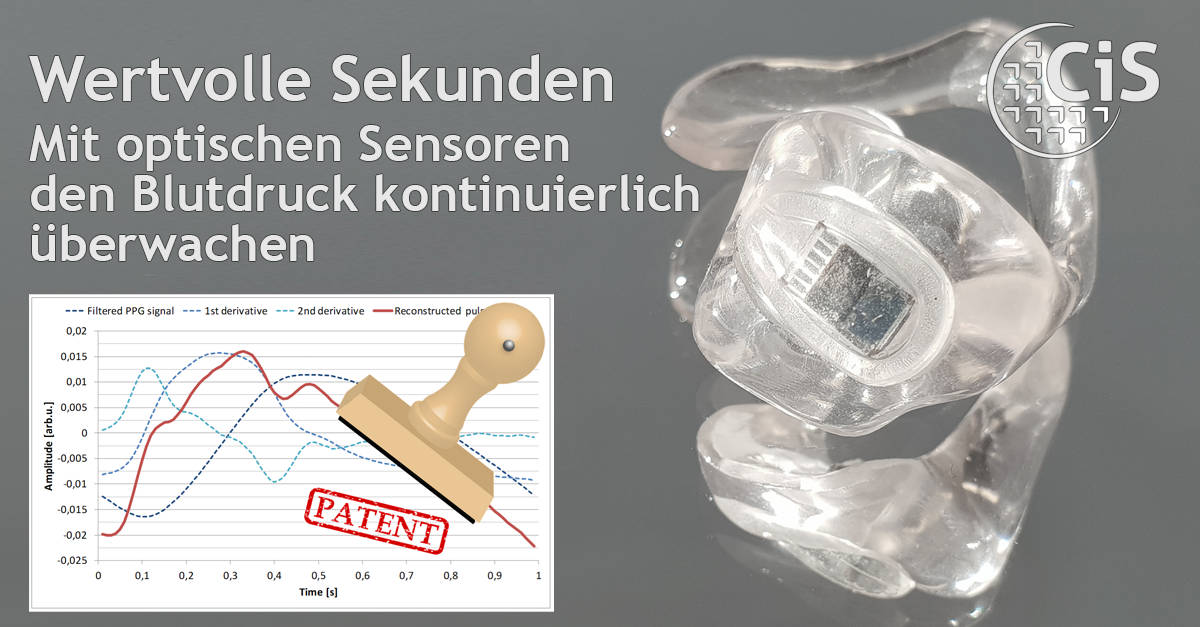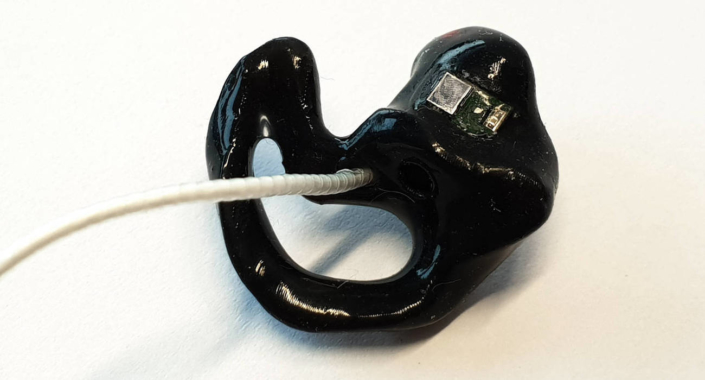More than 100 years ago, the Italian researcher Scipione Riva-Rocci developed a method for determining blood pressure using a pneumatic arm cuff. Today, this method is still standard in health care practice. Doctors are of course aware of its disadvantages; it can only be measured at specific points in time and the result can be subject to errors of up to 15% tolerance, which is partly due to inherent physiological variations in this vital parameter. Long-term blood pressure monitoring is also unpleasant for the patient and restrictive in everyday life.
The CiS Forschungsinstitut für Mikrosensorik GmbH has been working for more than 10 years on the development of photoplethysmographic sensors for the continuous measurement of vital parameters such as heart rate, heart rate variability and blood oxygen saturation. The most recent result is a miniaturised sensor that also monitors blood pressure in the ear.
Heart rate variability (HRV) is a measure of the overall adaptability of an organism and thus an essential core statement about the health of a person.
The measurement of blood oxygen saturation (SpO2) has currently gained in importance, as it is considered an early indicator of COVID-19 (SARS-CoV-2) disease.
Untreated or not well treated high blood pressure can lead to secondary diseases such as stroke, heart attack or kidney weakness.
Device manufacturers and scientists from various medical sub-disciplines can use the results achieved so far and, with the know-how from the CiS Research Institute, develop new products or equip them with functions that were previously not possible.
The latest trend is wearables with health functions, such as smart phones, smart watches and in-ear headphones. “The CiS Research Institute sees great potential for the latter in particular, as they are ideally suited for the integration of our ear sensors,” says Dr. Martin Schädel, the responsible business unit manager. “The ear is a perfect measuring location. It is always well supplied with blood, unlike the finger. Poor perfusion means bad signals. In addition, the measurement in the ear provides information about critical changes in condition much faster. In medicine, seconds often make the difference,” continues Schädel.
The PPG sensors consist of an optoelectronic module, which is installed in an ear mould and ensures the individual high wearing comfort. The module itself is a hybrid multichip containing several LEDs and photodiodes. Control and evaluation electronics are not integrated; analogue raw signals are provided. This interface offers industrial users the possibility of using proprietary electronic components and software.
The determination of the blood oxygen saturation (SpO2 value) is based on the ratio of the absorption of red and infrared light in the blood, which depends on the oxygen saturation. Therefore two LEDs of different wavelengths are required. In contrast, the pulse can be determined by using a single LED.
The micro-optical module uses a special algorithm for pulse contour analysis and determination of the pulse wave velocity, which can finally be used to detect changes in blood pressure. The CiS Research Institute was recently granted a European patent for this method.
Partners from industry can build on this. In addition to applications in cardiovascular diagnostics, there are already promising study results from sleep medicine for the detection of obstructive apneas (short-term respiratory arrest), aviation medicine for monitoring stress levels in pilots, in performance diagnostics and personalised medicine for the effectiveness analysis of drugs. The potential as a non-invasive technique for blood pressure monitoring was recently demonstrated in a comparison with a cardiac catheter measurement.






